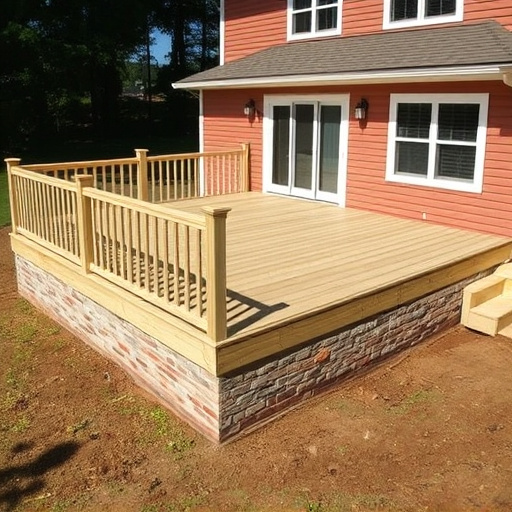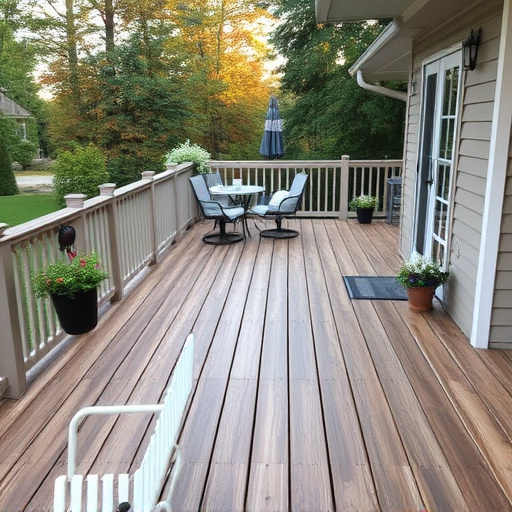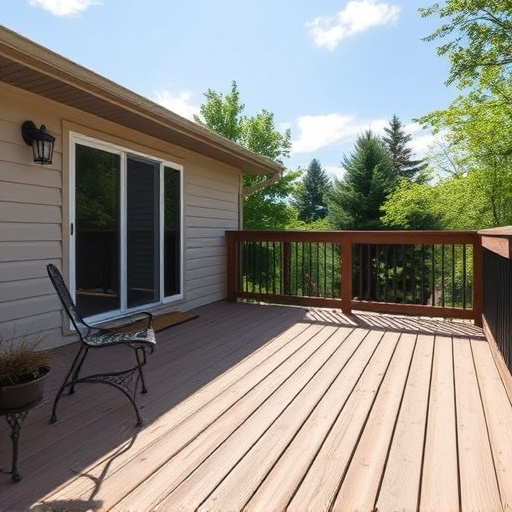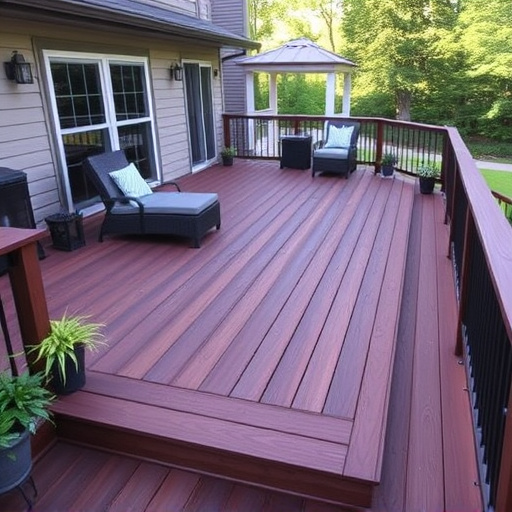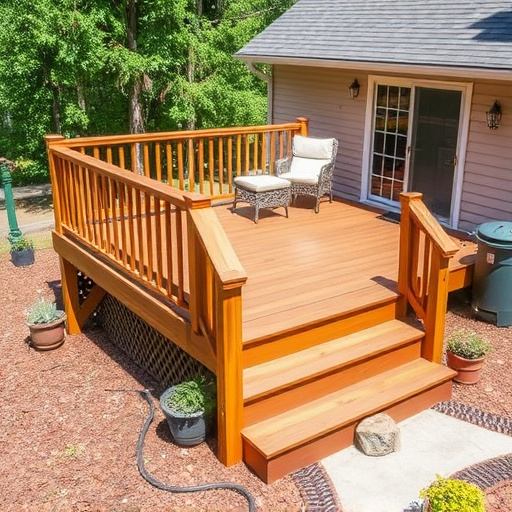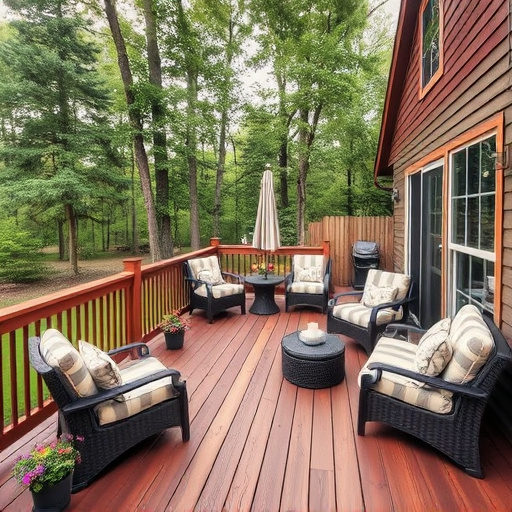Deck staining enhances aesthetic appeal and protects wood decks from environmental elements by applying liquid pigments or finishes. Proper preparation, including cleaning and sanding, ensures even coverage and optimal absorption for durable, vibrant results. Using water-based or semi-transparent stains preserves the natural wood grain, offers protection against rot and insects, and extends deck life. This cost-effective maintenance reduces future roofing needs.
Transform your outdoor space with stunning deck staining techniques for both pressure-treated and natural wood. This comprehensive guide explores the fundamentals of deck staining, offering expert insights on preparation and stain selection. Discover how to enhance the beauty of your natural wood decks while also understanding the unique considerations for pressure-treated materials. From choosing the right stains to top tips for application, this article is your go-to resource for achieving a vibrant, long-lasting finish.
- Understanding Deck Staining Basics
- Pressure-Treated Wood: Preparation and Stains
- Natural Wood: Enhancing Beauty with Stain
Understanding Deck Staining Basics
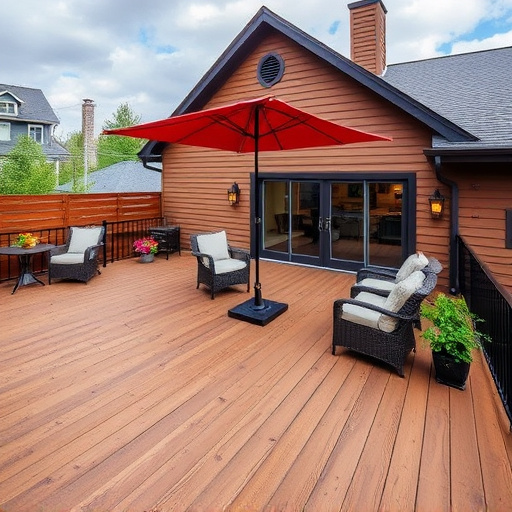
Deck staining is a popular way to enhance the appearance and protect both pressure-treated and natural wood decks. It’s a process that involves applying a liquid pigment or finish to the deck’s surface, creating a durable barrier against elements like sun, rain, and mold. The right stain can not only preserve the wood but also add depth of color and texture, transforming your outdoor space into a stunning feature.
Understanding the basics is key when staining a deck. Different types of stains are designed to suit various needs—from water-based stains that are easy on the environment and quick-drying, to oil-based options offering superior stain protection but requiring more time for cleanup. The choice depends on factors like climate, traffic, and personal preference. Additionally, proper preparation is crucial. This includes cleaning the deck surface, repairing any damaged wood, and applying the correct amount of stain to ensure even coverage and avoid overloading, which could lead to poor absorption and an uneven finish. With these basics in mind, you can effectively maintain or revitalize your deck, whether it’s a cozy backyard retreat or a commercial siding feature with a need for enhanced protection like those often seen in exterior roofing installations.
Pressure-Treated Wood: Preparation and Stains

Pressure-Treated Wood demands a meticulous preparation process for optimal deck staining results. Before applying any stain, it’s crucial to thoroughly clean the surface to remove any debris, dirt, and previous finish remnants. A pressure washer can be an effective tool for this initial step, ensuring that every nook and cranny is free from contamination. Once cleaning is complete, sanding comes next. Using a coarse-grit sandpaper will help to roughen the wood’s surface, allowing for better stain penetration. This step also helps to smooth out any irregularities or splinters, creating a smoother base for staining.
When it comes to stains, there are various options available, each with its own advantages. For pressure-treated wood, water-based and semi-transparent stains are popular choices due to their durability and ability to protect the wood without blocking light. These stains can enhance the wood’s natural grain while offering protection against rot and insects. Remember, proper preparation is key; take your time to ensure a clean and sanded surface before applying any stain to achieve long-lasting, vibrant results that complement your deck’s aesthetics, whether you’re focusing on residential siding or seeking expert roofing services for future maintenance.
Natural Wood: Enhancing Beauty with Stain

Natural wood decks offer a unique aesthetic that many homeowners appreciate, but maintaining their beauty can be challenging. That’s where deck staining comes into play as an effective solution. By applying a stain, you can enhance the natural grain and color of the wood, creating a stunning outdoor space. It’s an art form that allows you to customize your deck, making it stand out in your neighborhood.
Deck staining is not just about aesthetics; it also serves as a protective layer for your wooden deck. Stains penetrate the wood surface, sealing and preserving it from the elements, including harmful UV rays and moisture. This process prolongs the life of your natural wood deck, which is an excellent investment for any homeowner considering roofing services or roof replacement in the future, ensuring they don’t have to frequently maintain or replace their outdoor flooring.
Deck staining is a powerful tool for enhancing both the durability and aesthetic appeal of your outdoor space. Whether you’re working with pressure-treated wood, requiring specific preparation and stain choices, or natural wood, which benefits from specialized treatments to highlight its beauty, the right approach can transform your deck into a stunning focal point. By understanding the basics and following best practices, you can achieve a vibrant, long-lasting finish that adds value to your home for years to come. So, take the next step in your deck staining journey and watch your outdoor oasis come to life!








